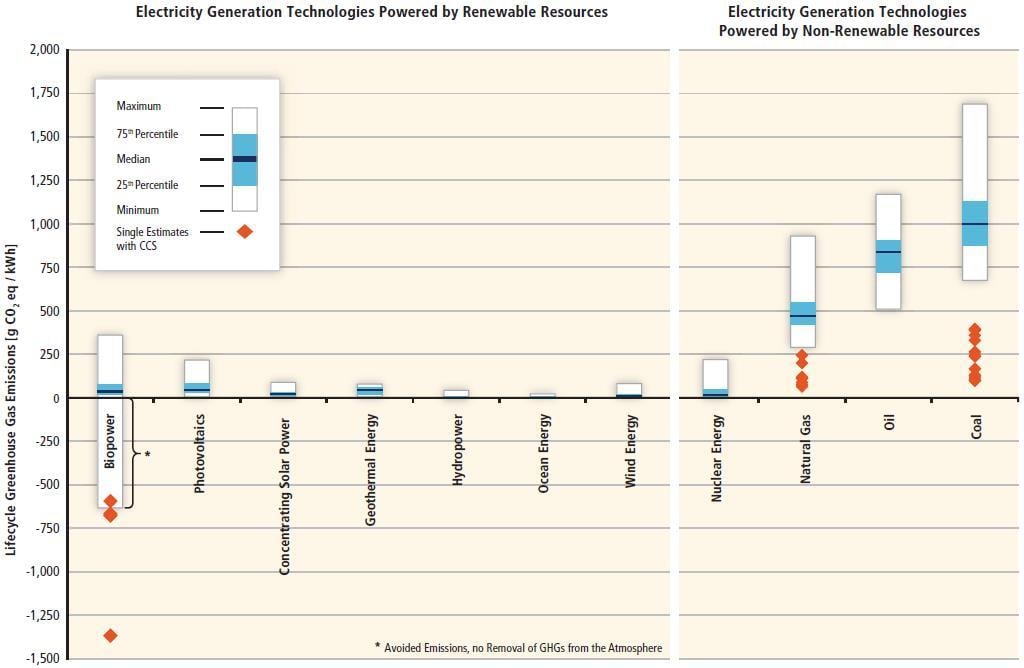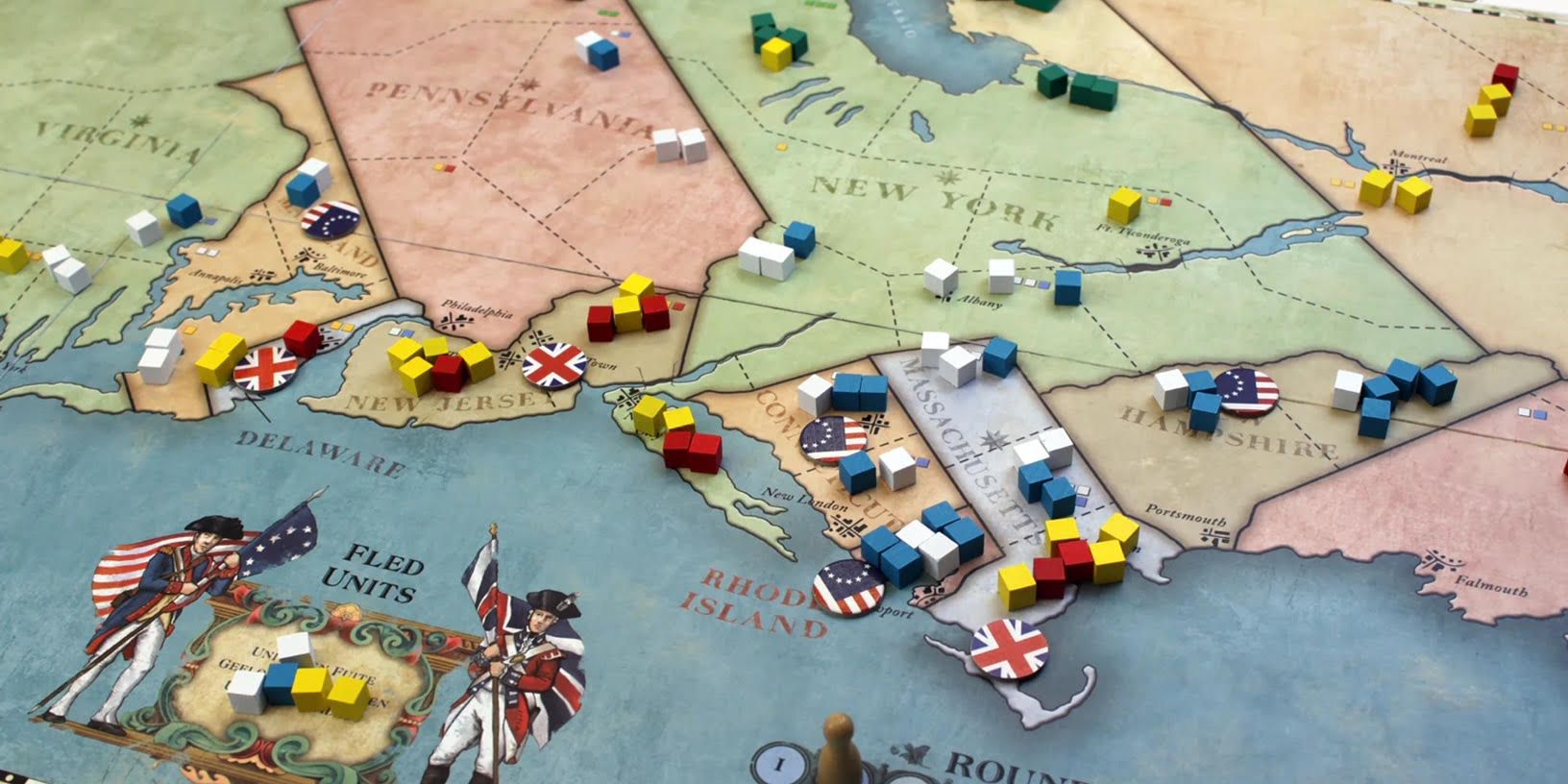Discover Pandipedia
Pandipedia is the world's first encyclopaedia of machine generated content approved by humans. You can contribute by simply searching and clicking/tapping on "Add To Pandipedia" in the answer you like. Learn More
Expand the world's knowledge as you search and help others. Go you!

Renewable energy sources are pivotal in addressing environmental issues, particularly climate change and pollution. These clean energy options, which include solar, wind, hydroelectric, biomass, and geothermal power, provide a range of ecological advantages compared to traditional fossil fuels. This report explores how renewable energy positively impacts the environment.
Reduction of Greenhouse Gas Emissions

One of the most significant benefits of renewable energy is its capacity to lower greenhouse gas emissions. According to the United Nations, fossil fuels account for over 75% of global greenhouse gas emissions and nearly 90% of all carbon dioxide emissions. To mitigate climate change, a substantial transition from these energy sources to clean and renewable options is necessary. Renewable energy generally emits little to no greenhouse gases during operation, greatly reducing the carbon footprint associated with energy generation[5].
For instance, renewable energy sources like wind and solar do not emit carbon dioxide during their electricity generation phases. This contrasts starkly with fossil fuels, which contribute significantly to global warming through emissions of various pollutants like carbon dioxide and sulfur dioxide. Data from the Union of Concerned Scientists highlights that the life-cycle emissions from burning natural gas or coal for electricity are significantly higher than those from renewable sources, further advocating for a shift towards renewables to expedite emission reductions[3].
Improving Air and Water Quality

Transitioning to renewable energy also significantly improves air and water quality. Fossil fuel combustion releases harmful pollutants linked to respiratory and cardiovascular health issues, while renewable sources such as wind and solar produce energy without air pollution emissions. The World Health Organization cites that about 99% of global populations breathe air exceeding safe quality limits, mainly due to pollution from burning fossil fuels. This pollution is connected to millions of premature deaths each year[4][5].
Additionally, renewable energy technologies have a lower impact on water resources. For example, wind and solar installations require minimal or no water to operate, while fossil fuel extraction and processing often lead to significant water contamination and depletion. Hydroelectric power, while impactful on river ecosystems, generally uses water in a more sustainable manner compared to the consumption associated with fossil fuel plants[3][4].
Economic and Employment Benefits

Investing in renewable energy is not just an environmental necessity but also an economic opportunity. The growth of the renewable sector has already generated numerous jobs, reportedly three times more per unit of electricity generated than fossil fuel jobs. More than 14 million jobs could be created in clean energy sectors by 2030, indicating that transitioning to renewable energy not only helps the environment but can also stimulate economic growth and job creation[5][7][8].
Furthermore, as renewable energy technologies advance and costs drop—solar energy costs have fallen by over 70% within a decade—more investments in these technologies become feasible. The declining costs of renewables encourage wider adoption, allowing countries to enhance their energy independence while reducing reliance on imported fossil fuels. The International Energy Agency anticipates that renewable energy could supply 90% of global electricity needs by 2050, showcasing its potential to fulfill substantial energy demands sustainably[5][10].
Enhancing Energy Resilience and Security

Diversifying energy sources through renewables also contributes to energy resilience. Renewable energy systems, especially when distributed across a broad geographic area, are less prone to large-scale failures. Storms or other natural disasters may damage individual renewable installations, yet the overall energy supply remains intact. This is unlike traditional fossil fuel systems, which may face complete outages due to concentrated infrastructure[4][11].
Moreover, increased reliance on domestic renewable resources can reduce geopolitical risks tied to fossil fuel dependence, such as price spikes due to political instability in oil-producing regions. By advancing local renewable energy initiatives, countries can enhance energy security and stability, further protecting their economies from volatile global energy markets[1][9].
Waste Management Solutions

Lastly, renewable energy technologies, particularly biomass, provide innovative solutions to waste management. Biomass energy sources utilize organic waste, thereby reducing landfill contributions and minimizing methane emissions, a potent greenhouse gas released from organic waste decomposition in landfills. This dual benefit not only contributes to energy generation but also helps address waste disposal issues[1][4].
Conclusion

The environmental benefits of renewable energy sources are substantial and multifaceted. By reducing greenhouse gas emissions, improving air and water quality, fostering economic growth and job creation, enhancing energy security, and facilitating waste management, renewables emerge as a pivotal component in achieving a sustainable and healthful planet. Transitioning from fossil fuels to renewable energy is not only a strategic environmental imperative but also an opportunity for global economic advancement and social improvement.
Let's look at alternatives:
- Modify the query.
- Start a new thread.
- Remove sources (if manually added).
- Request a manual search from our human research team.

Films have long served as a mirror to society, encapsulating its complexities, challenges, and changes. Through engaging narratives and strong visuals, cinema not only entertains but also provokes thought, raises awareness, and inspires dialogue about pressing social issues.
Storytelling as a Medium for Change

At its core, cinema is a powerful storytelling medium that captures the human experience, making it an ideal platform for addressing societal issues. By portraying characters who confront these challenges, films foster empathy among audiences, bridging the gap between different experiences and perspectives. As noted, 'when audiences connect with characters facing these issues on screen, they become more empathetic and informed about the challenges others face in real life'[2]. This capacity for storytelling enables films to spark conversations around complex societal matters, encouraging viewers to engage critically with the issues presented.
Films as Awareness-Generators
Many films effectively create awareness about various social issues, shedding light on aspects of society that might otherwise remain obscured. They prompt viewers to think critically, highlighting the impacts and implications of the challenges being faced. It's highlighted that films 'can shed light on the complexities of certain societal aspects' and often serve as 'conversation starters,' facilitating discussion on topics that might otherwise be difficult to approach[2][3]. Through compelling narratives, filmmakers can cultivate a deeper understanding of issues like poverty, racism, addiction, and gender equality, among many others.
Redefining Perspectives and Challenging Stereotypes

The film industry plays a significant role in challenging stereotypes and reshaping societal perceptions. By presenting well-developed characters and diverse narratives, films can help deconstruct biases and misconceptions. This is particularly impactful in films that showcase marginalized communities, allowing for a better understanding of their struggles and triumphs. As highlighted, many filmmakers employ their craft as a form of advocacy, utilizing documentaries and themed narratives to address social injustice[4][5].
Examples of this can be observed in documentaries that focus on crucial issues such as environmental degradation, systemic racism, and socio-economic inequalities. These works not only present facts but also personal stories that resonate emotionally with viewers, making the issues more relatable and pressing.
Creating a Dialogue Around Social Issues
Movies often serve as a catalyst for dialogue, encouraging discussions that promote greater awareness and understanding. They provide a common ground for audiences to discuss difficult concepts, which can lead to greater social consciousness. For instance, recent films addressing police violence and systemic racism have ignited conversations around these critical issues, often paralleling real-world movements such as Black Lives Matter[3][8]. This capacity for provoking dialogue is a vital component of how films can affect societal change, as they often present perspectives that challenge the status quo.
Films Driving Action and Advocacy

Beyond awareness and conversation, films have the potential to inspire action. By showcasing the resilience of individuals facing adversity, cinema can motivate viewers to pursue their own dreams while spurring them to contribute to societal change. This transformative impact is emphasized in the idea that films can be 'a call to action' rather than mere entertainment[2][4]. Works like 'Blackfish' have dramatically influenced public opinion and corporate practices, demonstrating how powerful storytelling can lead to tangible societal effects.
The role of documentaries in this process cannot be overstated. Documentaries often tackle difficult subjects head-on, revealing uncomfortable truths about societal issues, from human trafficking to climate change. As stated, documentaries 'shine a light on the social and environmental changes we urgently need to see' and reflect the collective concerns of the communities they depict[7][10].
The Risks of Misrepresentation
While films can have significant positive impacts, there is also the risk of perpetuating harmful stereotypes or narratives. Content that is insensitive or misrepresents the communities it seeks to portray can do more harm than good. Films need to handle sensitive subjects thoughtfully to avoid reinforcing stereotypes or marginalizing the voices they intend to represent. The ongoing dialogue in Hollywood regarding representation and authenticity highlights the industry's recognition of this critical aspect[3][4].
Conclusion

Ultimately, films serve as a powerful instrument for reflecting societal issues, simultaneously educating and inspiring audiences. Through storytelling, awareness-raising, challenging stereotypes, and advocacy, the film industry contributes significantly to social discourse and has the potential to drive meaningful change. The reflections of society portrayed in cinema can engage viewers not just in entertainment but also in critical discussions about the world we live in and the improvements that need to be made. As viewers, supporting films that approach these issues ethically strengthens their potential impact on society, illustrating that the magic of cinema extends far beyond the screen into the hearts and minds of individuals ready to engage with pressing global issues.
Let's look at alternatives:
- Modify the query.
- Start a new thread.
- Remove sources (if manually added).
- Request a manual search from our human research team.
Get more accurate answers with Super Search, upload files, personalised discovery feed, save searches and contribute to the PandiPedia.

The first lighthouse of modern days which merits attention is the Tour de Corduan.
Alan Stevenson[1]
The Eddystone lighthouse was a work of very great difficulty.
Alan Stevenson[1]

The dangerous reef called the Inch Cape was well known to the earliest navigators of Scotland.
Alan Stevenson[1]
The Bell-Rock Tower is 100 feet in height.
Alan Stevenson[1]
The advantages of a light on the Eddystone have long been known and acknowledged by seamen.
Alan Stevenson[1]
Let's look at alternatives:
- Modify the query.
- Start a new thread.
- Remove sources (if manually added).
- Request a manual search from our human research team.
Deep Speech 2 represents a significant leap in automatic speech recognition (ASR) technologies, addressing challenges in recognizing speech in both English and Mandarin. Developed by Baidu Research, this paper outlines how end-to-end deep learning can revolutionize speech recognition by leveraging a single powerful system with substantial improvements over previous models.
The Core Concept of Deep Speech 2
Deep Speech 2 is designed as an end-to-end learning approach for speech recognition, differing from traditional methods that often rely on elaborate pipelines of processing elements. By using a unified architecture composed of deep neural networks, the system aims to effectively process diverse speech inputs, including variations in accents, dialects, and noisy environments. The research emphasizes that this method can achieve impressive performance even when trained on limited data, as it adopts a more efficient way of learning across languages.
Specifically, the paper claims, 'we show that an end-to-end deep learning approach can be used to recognize either English or Mandarin Chinese speech—two vastly different languages.' This flexibility is one of the key highlights, as it allows for a broader application of the technology across different languages without significant restructuring[1].
Training and Model Architecture
The training process for Deep Speech 2 involves the use of various datasets comprising hours of labeled speech data. This enables the model to learn various aspects of language recognition effectively. The architecture employs recurrent neural networks (RNNs) to process the sequences of speech data, making it adept at handling temporal dependencies within the audio input.

The researchers observed that models performing end-to-end learning can bypass the traditional requirement of hand-engineering for various components of speech recognition systems, significantly reducing development time and resource investment. In addition, they implemented techniques like Batch Normalization and SortaGrad, which substantially improved training efficiency and accuracy[1].
For instance, using deep neural networks with multiple layers, 'we integrated a language model into the system, significantly enhancing accuracy.' This highlights how integrating auxiliary models can further refine the primary speech recognition capabilities of Deep Speech 2[1].
Performance Advantages
One of the standout features of Deep Speech 2 is its performance metrics, particularly in terms of word error rate (WER). The research presents substantial improvements in WER compared to previous models, making it clear that this approach has implications for real-world applications. For example, the paper states a reduction in WER by over 40% when using massive datasets and optimizing model configurations.

In experiments carried out, the results demonstrated that 'we can train up to 20 epochs on the full dataset, reporting a word error rate that is competitive with human transcribers.' This suggests that the model can perform at levels comparable to human accuracy under certain conditions, a critical benchmark for any ASR technology[1].
Real-World Applications and Efficiency
The deployment of Deep Speech 2 focuses on reducing latency and improving throughput, key aspects for real-world applications. With the growing demand for efficient speech recognition systems in interactive environments, the paper emphasizes that 'deployment requires a speech system to transcribe in real time or with relatively low latency'[1].
To achieve this, substantial improvements in computational efficiency were noted. The architecture leverages the capabilities of modern GPUs, permitting the processing of multiple streams simultaneously. This is particularly beneficial in applications that necessitate quick responses, like customer service bots or transcription tools in various business contexts.
Conclusion and Future Directions
The implications of Deep Speech 2 extend beyond technical achievements; they suggest a promising pathway for future developments in speech recognition technologies. The integration of enhanced neural architectures and learning strategies paves the way for improvements in accuracy and efficiency, enabling broader adoption in diverse contexts, from academic research to commercial applications.

Overall, the advancements showcased in the Deep Speech 2 paper illustrate the potential for deep learning to reshape how we approach complex tasks in speech recognition. The convergence of model sophistication and practical deployment capabilities signifies a forward momentum in the evolution of ASR systems, highlighting the ongoing relevance of research in this dynamic field[1].
Let's look at alternatives:
- Modify the query.
- Start a new thread.
- Remove sources (if manually added).
- Request a manual search from our human research team.

Early light-houses had problems with using coal fires, and mirror-glass reflectors[1]. The use of coal-fireshad been laidaside, and oillights, with reflectors, had been introduced[1]. The mirrors were made of glass, but a better design employed sheets of copper coated with silver[1]. The older light-houses were made of wood, which was shut off from the air and dried to the state of tinder[1].
Let's look at alternatives:
- Modify the query.
- Start a new thread.
- Remove sources (if manually added).
- Request a manual search from our human research team.

Art house cinema, also known as arthouse films or art films, refers to a category of cinema typically characterized by its artistic and experimental nature, often produced outside the major film studio system. These films prioritize artistic expression over commercial appeal, aiming to provide a serious, artistic work that is often experimental and not designed for mass audiences[4].
These films are tailored to niche markets, usually inviting viewers to engage with complex themes and unconventional narratives[2][4]. They typically feature non-linear storytelling, a focus on mood and tone, and character-driven plots that explore philosophical, psychological, or social issues[2][3]. The cinematography in arthouse films is often innovative, employing unique visual styles and unconventional camera techniques to convey deeper meanings[2][3][5].
Art house films have been vital in shaping cinema by influencing mainstream filmmaking and expanding narrative conventions, with directors frequently embracing their personal visions, prioritizing craftsmanship over entertainment[3][6]. Notably, they are commonly showcased at independent theaters and film festivals, making them distinct from mainstream releases[4][5].
Let's look at alternatives:
- Modify the query.
- Start a new thread.
- Remove sources (if manually added).
- Request a manual search from our human research team.
Get more accurate answers with Super Search, upload files, personalised discovery feed, save searches and contribute to the PandiPedia.

Special effects in film are created using two main categories: practical effects and digital effects. Practical effects involve physical techniques that are captured on camera, including makeup, prosthetics, animatronics, miniatures, and pyrotechnics. These methods have been used historically to create illusions like explosions and transformations, adding tangible realism to scenes[1][2][3].
Digital effects, also known as visual effects (VFX), utilize computer-generated imagery (CGI), motion capture technology, and digital compositing. These techniques allow filmmakers to create stunning visuals that would be hard or impossible to achieve practically. Advances in technology have made digital effects a significant component of modern filmmaking, allowing for a seamless blend with live-action footage[2][3][4].
Let's look at alternatives:
- Modify the query.
- Start a new thread.
- Remove sources (if manually added).
- Request a manual search from our human research team.
Twilight Struggle
A two-player game that plays out over ten rounds, representing the Cold War, where players influence countries and manage resources in a bid to avoid nuclear war[6].

Through the Ages: A New Story of Civilization
Players develop their civilizations from the ancient era to the modern age, managing resources, military strength, and cultural achievements[8].

Brass: Birmingham
Set in 18th and 19th century Britain, players build an industrial empire during two eras, using strategy to control resources and earn victory points[4][8].

Pandemic: Fall of Rome
A cooperative game focusing on managing diseases in ancient Roman locations, combining historical themes with classic Pandemic mechanics[8].

A Few Acres of Snow
A blend of deck-building and strategic gameplay set during the French and Indian War, focusing on territorial control between British and French forces[6][8].

Commands & Colors: Ancients
This game revolves around the tactics and challenges faced in ancient warfare, engaging players with command cards and battle dice[6].

Paths of Glory
A deep strategic board game that simulates the political and military complexities of World War I[8].
History of the World
Players guide the evolution of empires from ancient times to the 20th century, competing for global dominance[7].

Axis & Allies
A classic strategic board game that allows players to control major powers during World War II, blending combat and diplomacy[6].

Herstory: The Board Game of Remarkable Women
A game where players gather cards to learn about the achievements of women who changed history[7].
Trekking Through History
A fun board game that combines learning with gameplay, focusing on various significant historical events[7].
History Channel Trivia Game
A trivia game that challenges players' knowledge of historical events and figures, making it educational and fun for all ages[7].
Treasures of the Pharaohs
Players explore ancient Egyptian tombs to uncover artifacts, combining strategy with a historical theme[7].
10 Days in Africa
A travel-themed game where players create itineraries while learning about African countries and their cultures[7].
Ticket to Ride: Europe
A strategic train game that incorporates historical routes across Europe, requiring players to build railroads for points[5][9].
The Great Zimbabwe
Players build their economies and cultures based on historical foundations, managing resources to elevate their civilization[6].
1754: Conquest
A game focused on the early stages of the French and Indian War where players vie for control of resources and territory[6].
Let's look at alternatives:
- Modify the query.
- Start a new thread.
- Remove sources (if manually added).
- Request a manual search from our human research team.
Recent Developments Surrounding the Internet Archive
The Internet Archive (IA) has recently faced significant legal challenges regarding its digital lending practices, particularly in the context of its Open Library and the larger conversation about access to digital books. A recent ruling from the Second Circuit Court of Appeals rejected the Internet Archive's appeal to continue lending scanned ebooks without publisher permission, marking a decisive moment in the ongoing lawsuit initiated by major publishers including Hachette, Penguin Random House, Wiley, and HarperCollins.
Legal Setbacks in Digital Lending

The court's decision emphasizes the need to uphold authors' rights and publishers' economic interests. According to the court, allowing the Internet Archive's model would lead to widespread copying that undermines creators' compensation, thereby diminishing their motivation to produce new works. The court acknowledged the challenges posed by eBook licensing fees to libraries but ultimately sided with the publishers, stating that that the balance between public access to creative works and the rights of creators must be maintained under the Copyright Act[4][8].
In response to the ruling, Chris Freeland, director of library services at the Internet Archive, expressed disappointment and reiterated the Archive's commitment to defending libraries' rights to own, lend, and preserve books. The Internet Archive intends to review the opinion further and continue its advocacy for the restoration of access to approximately 500,000 titles that have been removed from its collection due to publisher restrictions[1][4].
Community Response and Advocacy Efforts

In light of these legal challenges, the Internet Archive has urged supporters to take action by signing a petition to restore access to the restricted titles. A significant part of the response from the community has been to recognize the importance of digital libraries like the Internet Archive, which play a critical role in providing equitable access to information and educational resources. Many users have voiced their support for the Archive, emphasizing the vital role it plays in their personal education and self-improvement, particularly for those who may not have access to physical libraries[3][4][6].
The Impact of the National Emergency Library
The legal troubles for the Internet Archive escalated during the COVID-19 pandemic, when it launched the National Emergency Library to provide unrestricted access to digital copies of books. This initiative allowed multiple users to borrow the same titles simultaneously, which ultimately triggered the lawsuit from the publishers. The court pointed out that while the IA's intentions may have been beneficial, the execution undermined the established rights of publishers[4][8].
The Internet Archive's framework of controlled digital lending—where each digital loan corresponds to a physical copy held by the library—differentiated it from other ebook lending services like OverDrive that operate on a licensing basis. However, the court's recent ruling effectively negated the legality of this model, leaving the IA in a precarious position[3][4].
Continued Commitment to Digital Rights
Despite these setbacks, the Internet Archive continues to advocate for the digital rights of libraries and the preservation of books. The organization has taken steps to emphasize its goal of universal access to knowledge, which Brewster Kahle, the Internet Archive's founder, articulated as critical to the 'soul of libraries in the digital age.' He argues that resolving these issues should be straightforward, primarily requiring publishers to sell ebooks to libraries for ownership and preservation, similar to traditional lending models[3][4].
This situation has drawn public discussion around how copyright and digital lending laws impact access to information. Many voiced their frustration at the limitations placed on digital access, viewing the removal of thousands of titles from the Internet Archive as a significant disservice to the public, especially in underserved communities where physical libraries may lack resources[3][4].
Community Initiatives and Educational Events

In addition to legal battles, the Internet Archive actively engages with communities through programs like Community Webs, which helps public libraries document their communities digitally. Recent symposiums have focused on collaboration and learning among archivists and librarians, fostering dialogue that can potentially influence how community archiving is perceived and implemented in the future[5][6].
The broader implications of the Internet Archive's legal issues resonate beyond just its operations. They speak to the very heart of how digital libraries operate, the balance between creator rights and public access, and the ways in which knowledge and culture are preserved and shared in an increasingly digital world.
Conclusion
The ongoing struggle of the Internet Archive reflects the tension between maintaining public access to digital resources and the economic realities faced by authors and publishers. As the IA navigates the implications of recent court rulings, its commitment to serving as a resource for libraries, educators, and the public remains steadfast, highlighting a commitment to equitable access to knowledge amidst a rapidly evolving digital landscape[3][4][8].
Let's look at alternatives:
- Modify the query.
- Start a new thread.
- Remove sources (if manually added).
- Request a manual search from our human research team.
Let's look at alternatives:
- Modify the query.
- Start a new thread.
- Remove sources (if manually added).
- Request a manual search from our human research team.




























